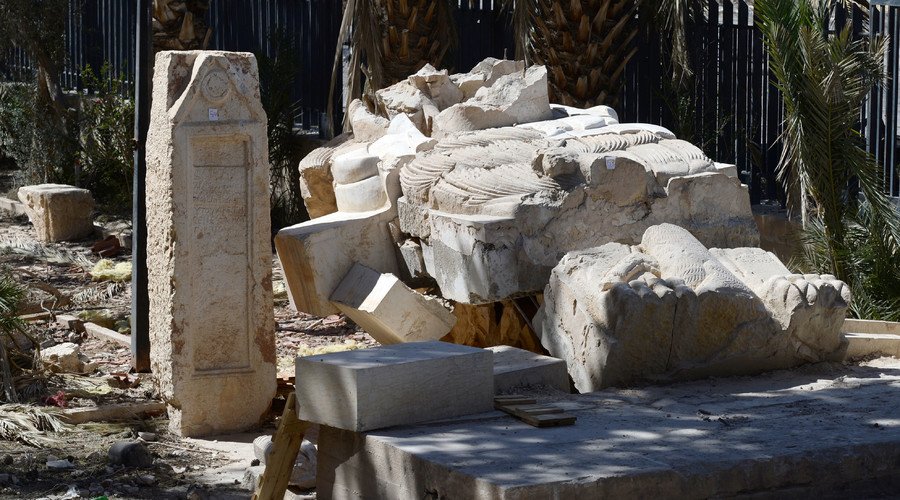Palmyra restoration in ‘full swing’ as intl experts evaluate tremendous harm caused by ISIS (VIDEO)
Numerous experts flocked to Palmyra to assess the damage caused by jihadists and revive the city from which all mines were removed just last week by Russian and Syrian engineers. An RT Arabic crew reports that the restoration work is already in full swing.
Most of Palmyra’s colonnades, temples, grave sites have now been left in shambles after almost a year under savages’ control. Although the damage done to the city is unimaginable, restoration experts are doing whatever they can to return the city to its original splendor.
“Various delegations and representatives of international organizations have arrived to the city to record and assess the damage,” RT’s Sheren Ali reports.
International experts are diligently working on ancient ornaments and are taking every effort to preserve what has been left and “rebuild” what has been destroyed during a 10-month-long capture of the city by Islamic State (IS, formerly ISISL/ISIS) terrorists.
“Before the arrival of ISIS about 70-80 percent of the most important archaeological fragments were removed from the Museum of Palmyra. Only the large statues that we could not remove were left. Therefore, the ISIS militants mutilated the faces of the statues, and smashed their heads. Experts from research laboratories are now engaged in collecting these fragments, as well as in their cleansing and identification,” Yasir Usef, director of the science laboratories of the Syrian Directorate-General of Antiquities & Museums told RT.
Among the artifacts on which experts are currently working on is a remarkable Lion of Allat statue dating all the way back to the first century AD. Luckily, it is possible to put the demolished statue back to pieces, experts said.

“We stand before the statue of the Lion of Allat, which was destroyed by ISIS terrorists. Thank God, about 80 percent of the statue is preserved. It should be repaired, rebuilt. Four specialists arrived from Poland to Syria as volunteers to begin the restoration of the statue in cooperation with the Directorate-General of Antiquities & Museums and under the auspices of UNESCO,” Usef said.
Several antiquities have been moved to a local restoration center for specialists to analyze. Experts are also evaluating the state of the building of Palmyra’s museum and its artifacts.
The current situation in Palmyra concerns all mankind and is going to have an impact on the future of all civilization, US senator Richard Black said.
“What is see in Palmyra is the legacy of all civilization. It’s not the legacy of Syria, it is the legacy of all mankind and what is happening in Syria, will determine the fate of civilization itself,” he told RT.
Bomb Cache: Russian sappers unearth #ISIS explosives depot in #Palmyrahttps://t.co/lSbP3EdAm8pic.twitter.com/mDeVv9lLDZ
— RT (@RT_com) April 25, 2016
Last week Russian engineers completed clearing of Palmyra, defusing nearly 3,000 explosive devices on around 230 hectares (2.3 sq km) and demolished “one of the largest jihadist arsenals” of more than 12,000 explosive devices.
Palmyra has been under jihadists’ occupation since May of 2015. The Syrian Army backed by Russian forces managed to recapture the city on March 27, an event largely viewed as a victory and turning point in the war against terrorists.
A number of remarkable monuments including the Arch of Triumph, the Temple of Baalshamin and the iconic 2,000-year-old Bel Temple were left in ruins. The City of Palms has been left partly devastated and ridden with explosive devices.












